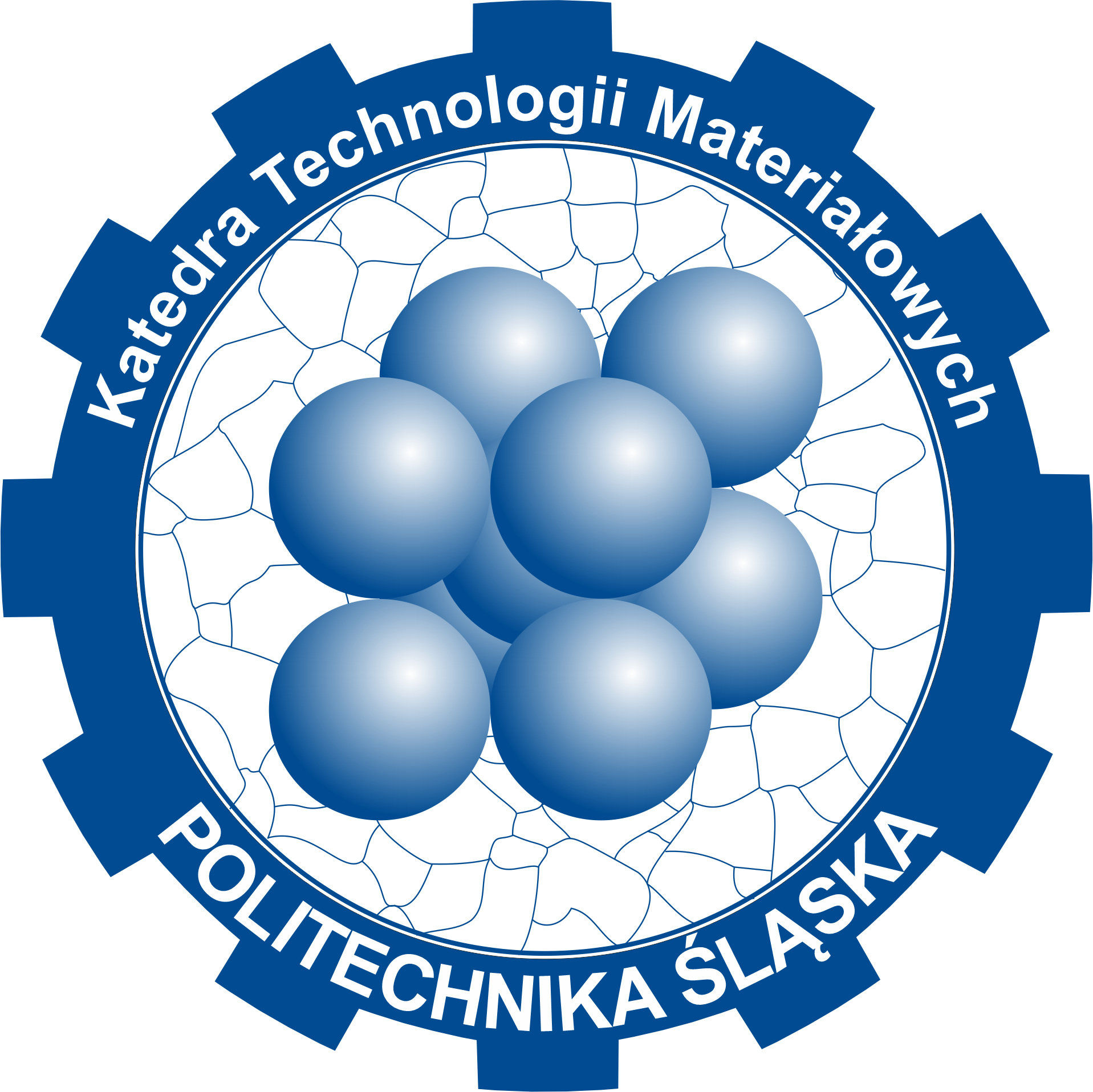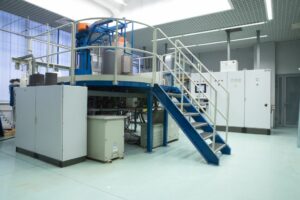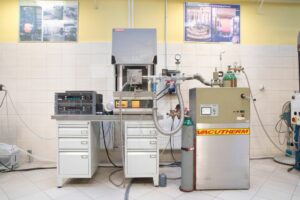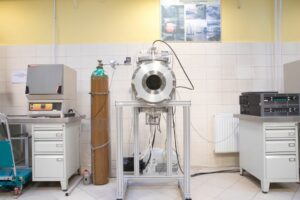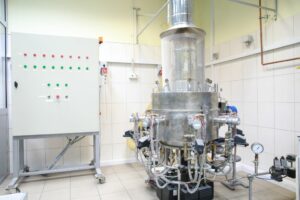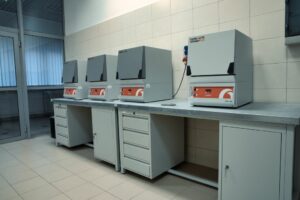Surface Engineering Laboratory
- Name of laboratory: Surface Engineering Laboratory
The Surface Engineering Laboratory offers a wide range of scientific research and technology related to materials engineering, with particular emphasis on surface engineering issues. The team conducts research and implements research projects related to new coating materials and technologies for their production. For many years, scientific and research projects for the aviation sector have been implemented in partnership with national and international companies. Research for the aviation industry is carried out as part of the GE Research Network for E-TDC "EUROPEAN TECHNOLOGIES DEVELOPMENT CLUSTERS" and the Center for Advanced Technologies AERONET Aviation Valley. The experience and knowledge of the team provides a comprehensive approach to the selection of coatings and protective layers, design and simulation of technological processes of heat and thermo-chemical treatment.
- Laboratory equipment (list)
Technological equipment:
- Apparatus for the production of coatings by chemical vapor deposition - CVD
- Apparatus for the production of coatings using the non-contact gas method – “out of pack”
- Apparatus for the production of coatings using the contact-gas method – “pack method”
- Apparatus for the deposition of coatings by physical vapor deposition - Arc-PVD method
- Apparatus for the deposition of coatings by physical sputtering
- Heat treatment furnace with gas partial pressure control
- Apparatus for heat treatment in vacuum, vacuum furnace
- Equipment for preparation of metallographic specimens
Research Stands:
- Stand for cyclic and isothermal oxidation tests
- Stand for testing resistance to thermal shocks
- Stand for high-temperature corrosion testing
- Stand for testing high-temperature corrosion in the atmosphere of exhaust gases
- Stand for testing the fire resistance of materials in accordance with the PN-EN ISO 2685 standard
- Stand for chemical composition testing using the XRF method
- Stand for surface roughness testing using the contact method
- Stand for microstructure research with the use of light microscopy
- Calotest stand for measuring the thickness of adhesive coatings
- 3D white light GOM scanner for measuring geometric features
- Electronic scales for mass changes measuring
- Research offer and scope of services (research opportunities)
We make advanced protective, heat-resistant and wear-resistant coatings with a reduced coefficient of friction. The equipment of the laboratory allows for the production of coatings by various methods using wide range of materials such as metals, nonmetals or ceramics. We also offer heat treatment processes in vacuum, controlled atmosphere and inert gases. We have:
- Apparatus for the production of layers by chemical vapor deposition (CVD). Working space φ220x500 mm, working temperature 1100°C. Device equipped with 3 generators, including 2 high-temperature generators up to 650°C. The stand enables the production of diffusion heat-resistant coatings and coatings modified with Cr, Si, RE,
- Apparatus for the production of diffusion layers using the non-contact gas method (out of pack method). Working space φ140x100 mm, working temperature 1100°C. The stand enables the production of diffusion heat-resistant coatings and coatings modified with Cr, Si, RE,
- Apparatus for the production of layers by the contact-gas method (pack cementation method). Working space 400x150x150 mm, working temperature 1100°C. The station enables the production of diffusion layers e.g. Al, Cr, Si, RE,
- Arc-PVD physical vapor deposition (PVT-550) device. Working space φ350x350 mm, working temperature up to 600°C. The device is equipped with 2 arc sources. The apparatus enables the production of one and multilayers coating such as: TiN, TiAlN, CrN, ZrN, Ti, Al, Cr, Ti/TiN, Cr/CrN and Al/AlN,
- Apparatus for the deposition of coatings by physical sputtering. Working space φ70x150 mm. The device enables the production of coatings by PVD sputtering method with different chemical composition,
- Heat treatment station with adjustable partial pressure, retort furnace. Working space 150x150x300 mm,
- Vacuum heat treatment furnace. Working space φ400x700 mm, working temperature up to 1500°C,
- Stand for preparing metallographic specimens, equipped with metallographic cutter, automatic grinder and polisher, manual grinder and polisher.
The Surface Engineering Laboratory offers tests of the performance properties of materials, layers and coatings in the field of: oxidation tests in isothermal and cyclic conditions, corrosion in S, Cl, Na, V, CMAS, AVA environments, corrosion in the atmosphere of exhaust gases. The laboratory is equipped with a stand for fire resistance testing of structural elements and materials in accordance with the PN-EN ISO 2685 standard.
- Stand for cyclic and isothermal oxidation tests. The station is equipped with 5 Carbolite CWF 13/13 furnaces, working temperature up to 1300°C, working space 13 liters, oxidizing atmosphere,
- Stand for testing resistance to thermal shocks, equipped with 2 Carbolite tube furnaces, working temperature 1300°C, possibility of programming any thermal cycles, possibility of forced cooling,
- Stand for high-temperature corrosion testing. The station is equipped with 2 Carbolite ELF 11/9 furnaces, working temperature 1100C, working space 9 liters,
- Stand for testing high-temperature corrosion in the atmosphere of exhaust gases. Own design of the "burner rig" stand equipped with 8 gas burners, possibility of testing 8 samples simultaneously, working temperature up to 1100°C, programming any thermal cycles,
- Stand for testing the fire resistance of materials in accordance with the PN-EN ISO 2685 standard, operating temperature 1100°C, sample size 100x100 mm, the ability to test fire resistance and flame resistance. Sample temperature measurement using a high-sensitivity thermal imaging camera – FLIR T660.
- Person responsible for Laboratory (contact details)
Associate Professor Bogusław Mendala PhD, DSc
e-mail: Boguslaw.Mendala@polsl.pl
tel.: +48 32 603 44 00





